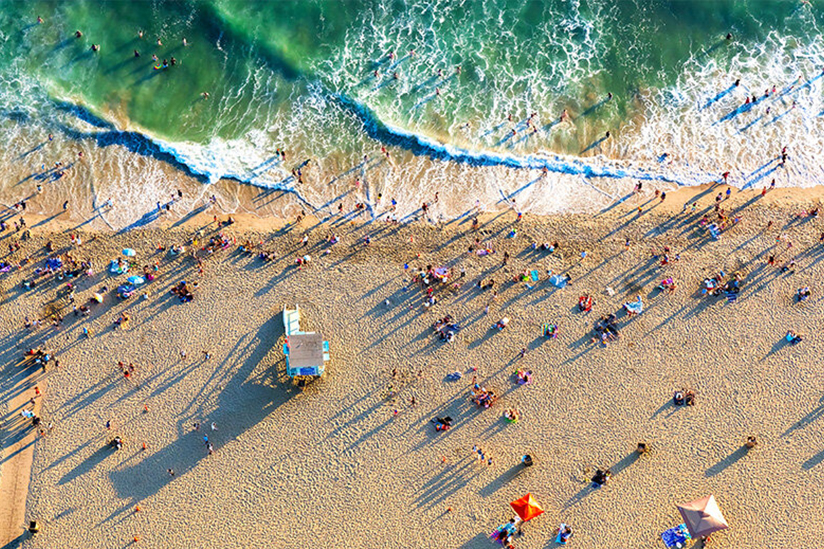A recent discovery of nearly 800,000 pounds of the banned chemical near Santa Catalina Island sparks new research for an institution that has spent five decades helping Southern California manage its coasts.
In 2020, some 800,000 pounds of the pesticide DDT were discovered on the ocean floor near Santa Catalina Island, off the coast of Southern California. The toxic accumulation is the result of industrial dumping of, on average, 40,000 pounds annually from the 1940s to the ’60s.
DDT is probably most famed for its central place in Rachel Carson’s ground-breaking novel Silent Spring, which chronicled the substance’s disastrous effects on wildlife. The book galvanized the United States to ban the substance and to create the Environmental Protection Agency (EPA) in the 1970s.
The EPA has known about DDT in Southern California waters for decades. In the 1990s, the agency designated 17 square miles of the Rancho Palos Verdes coastline a Superfund site due to contamination from the substance. However, recent research has revealed that the geographic extent and quantity of the pollution are much greater than once believed.
USC Sea Grant, part of the USC Dornsife College of Letters, Arts and Sciences, explains this complicated history in their 2023 report, called a story map, on the topic.
Figuring out how the DDT might impact the ocean and if there is any way to mitigate its effects is now crucial, and USC Sea Grant has 50 years of experience in just this sort of problem.
“We have an exceptional network of scientists, community leaders, on-the-ground workforce and government representatives at national, regional, state and local levels,” says Karla Heidelberg, director of the program and professor of the practice of biological sciences and environmental studies at USC Dornsife. “This and our in-depth knowledge of the region give us a unique ability to generate timely, practical solutions to real problems in real places, like the current issue with DDT.”
Formed in 1972, USC Sea Grant is part of a system of university-based Sea Grant programs focused on America’s coasts and Great Lakes, funded by the National Oceanic and Atmospheric Administration.
It’s celebrating five decades of ocean and coastal research, community outreach and education, while also taking on one of its biggest challenges to date.
USC Sea Grant helps fish and fishermen
Inspired by USC’s Los Angeles location, where waves crash to shore on the nation’s second-largest metropolitan area, USC Sea Grant makes the “urban ocean” the focus of its mission. Since its start, the program has funded research into issues that affect ports, porpoises and people alike.
“Before my time, back in the ’70s, the program looked at the environmental impact of the ports,” says Linda Duguay, who served as director of USC Sea Grant from 1999 to 2022 and is associate professor (research) of biological sciences at USC Dornsife. “At one point, the tuna canneries were there, too, and there were a lot of toxins. We did a lot of research early on into what was happening in the port, and we can now say that the ports are much cleaner than they were.”
